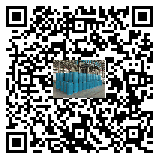Application and advantages of paint sealant
Paint sealant is a chemical additive used to enhance the adhesion between paint and substrate.
The following are the applications and advantages of paint sealant:
1. Application
Paint sealant is widely used in the paint coating process of various metal and non-metal substrates
to improve the bonding strength between the coating and the substrate. Specific application areas
include but are not limited to:
Metal products: paint coating of difficult-to-attach metal surfaces such as aluminum, aluminum alloy,
zinc, tinplate, stainless steel, and electroplated surfaces.
Glass products: When applying paint on the glass surface, the use of paint sealant can significantly improve
the adhesion of the paint film.
Plastics and other non-metallic materials: For some plastics and other non-metallic substrates that require
paint treatment, paint sealants can also play an important role.
2. Advantages
Improving adhesion:
Paint sealants can significantly improve the bonding strength between the coating and the substrate, making the
coating more firmly attached to the substrate surface.
For metal surfaces that are difficult to adhere to, such as aluminum and aluminum alloys, the use of baking varnish
sealants can significantly improve the adhesion of the paint film and reduce the risk of coating shedding and peeling.
Enhance coating performance:
The baking varnish sealant can enhance the ductility and impact resistance of the coating, making the coating more
flexible and impact-resistant.
When baking at high temperature and rapid speed, the baking varnish sealant can keep the coating from changing color,
and the coating has excellent weather resistance.
Improve baking efficiency:
The baking varnish sealant can withstand high-temperature baking, such as high temperatures above 280°C, and will
not affect the adhesion and performance of the paint film.
This allows for more efficient heating and curing during the baking process, shortening the production cycle.
Compatibility and stability:
The baking varnish sealant has good compatibility with the resin and will not affect the storage stability of the coating.
During use, the baking varnish sealant can remain stable and will not react adversely with other components in the coating.
Easy to use:
Paint sealants are usually added to the paint in a certain proportion and can be added at any stage of the paint.
After addition, the paint sealant can be quickly and evenly dispersed in the paint without additional treatment or processing.
Improved processing performance:
After using the paint sealant, the processing performance of the paint is improved, such as fluidity and leveling.
This helps to obtain a more uniform and smooth coating effect during the coating process.
Environmental protection:
Modern paint sealants are usually made of environmentally friendly raw materials and meet environmental protection
requirements.
During use, paint sealants do not produce harmful volatile substances and are environmentally friendly.
In summary
Paint sealants have significant advantages in improving the adhesion between the coating and the substrate, enhancing the film
performance, improving the baking efficiency, compatibility and stability, easy to use, and improving processing performance.
These advantages make paint sealants widely used in the paint coating process of metal, glass and other substrates.


